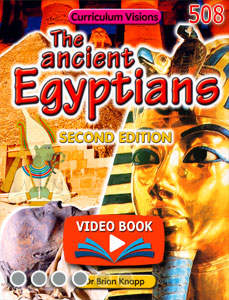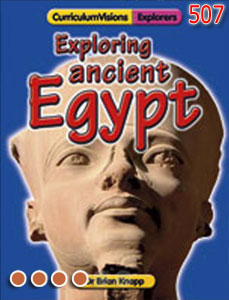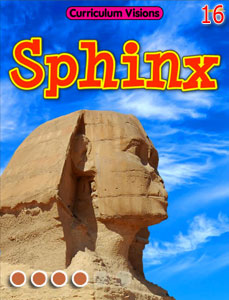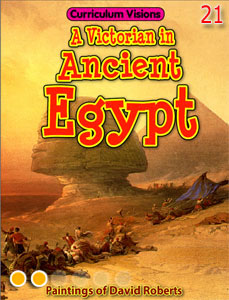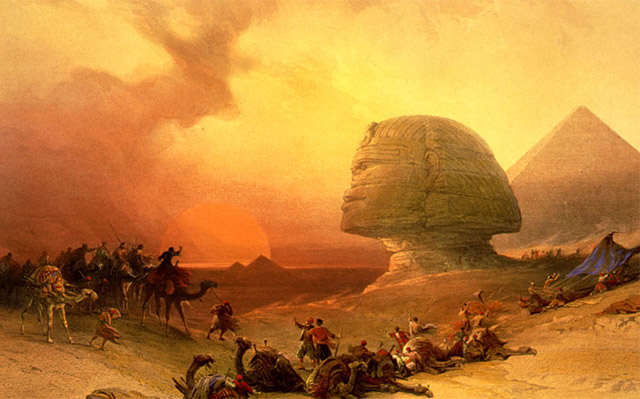The word sphinx was coined by the Ancient Greeks to refer to one of the creatures in their stories (myths). It had the head of a person and the body of a lion. When they visited Ancient Egypt, they already had a word for the figures that they saw. We still use the Greek word today. We do not know what the Ancient Egyptians called these extraordinary creatures.
The sphinx was a temple guardian and was placed close to royal tombs or religious temples. Many pharaohs had sphinxes carved in their own likeness.
Not every sphinx was carved with a pharaoh’s head. About 900 sphinxes line the route to the temple in honour of the god Amun at Karnak. They have heads of rams. The ram represented the god Amun.
It is an amazing fact, but the Great Sphinx at Giza is the largest single-piece statue in the world. It is 74m long, 6m wide, and 20m high. It was built four-and-a-half thousand years ago, and yet its immense scale has never been surpassed.
The Sphinx faces the rising sun with a temple to the front. When it was carved, everyone must have known why it was carved in that place, whose face it was, and what it was meant to be. Because it is such a vast and unique thing, you might imagine that this information would have been handed down by word of mouth, or put into hieroglyphics somewhere nearby. But that did not happen. So we do not know why it was built. We do not know who it was of, and we do not know what its purpose was. We don’t even know what the people who carved it called it. The word sphinx was certainly not used by the sculptors, for that word was only used two-and-a-half thousand years later when the Ancient Greeks visited.
What we can see is that the Great Sphinx is situated in the same area of the plateau as the pyramids of pharaoh Khafre and Khufu and close to both the temples of Khafre. This has led many people to suppose that the face on the Great Sphinx is that of Khafre, but there is no shred of written evidence for that (or, of course, for any other explanation, either).
But there is a problem. The causeway ramp from the valley temple of Khafre to the mortuary temple by the pyramid is not the direct route you would have expected it to have taken, but slightly slanted, as though it was built to go around something that was already there. So could the Sphinx already have been carved before Khafre’s pyramid was begun? Some people think so. In that case it might have been Khufu’s face, or even someone altogether earlier.
Puzzling things go on. All of the body features of a lion have been carved: paws, claws and a tail which curls around the back and part way along the side. But the head of the pharaoh is small in proportion to the lion’s body. Given the great skill of the sculptors, this could not have been a mistake, but must have had some meaning. Or it may just have been that the amount of good rock to carve the head was too small to allow a bigger one. And the difference in scale may not have been important to them.
